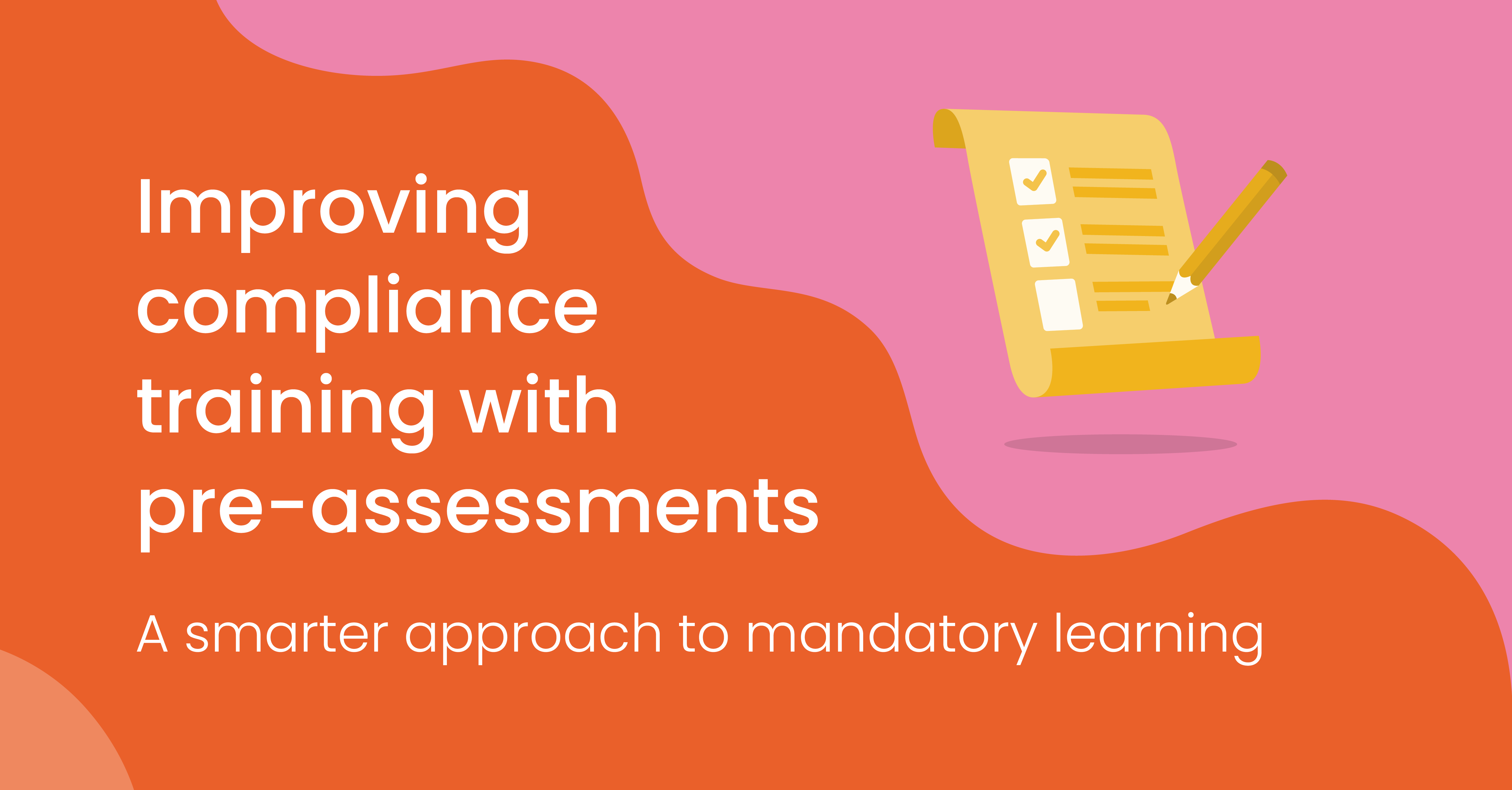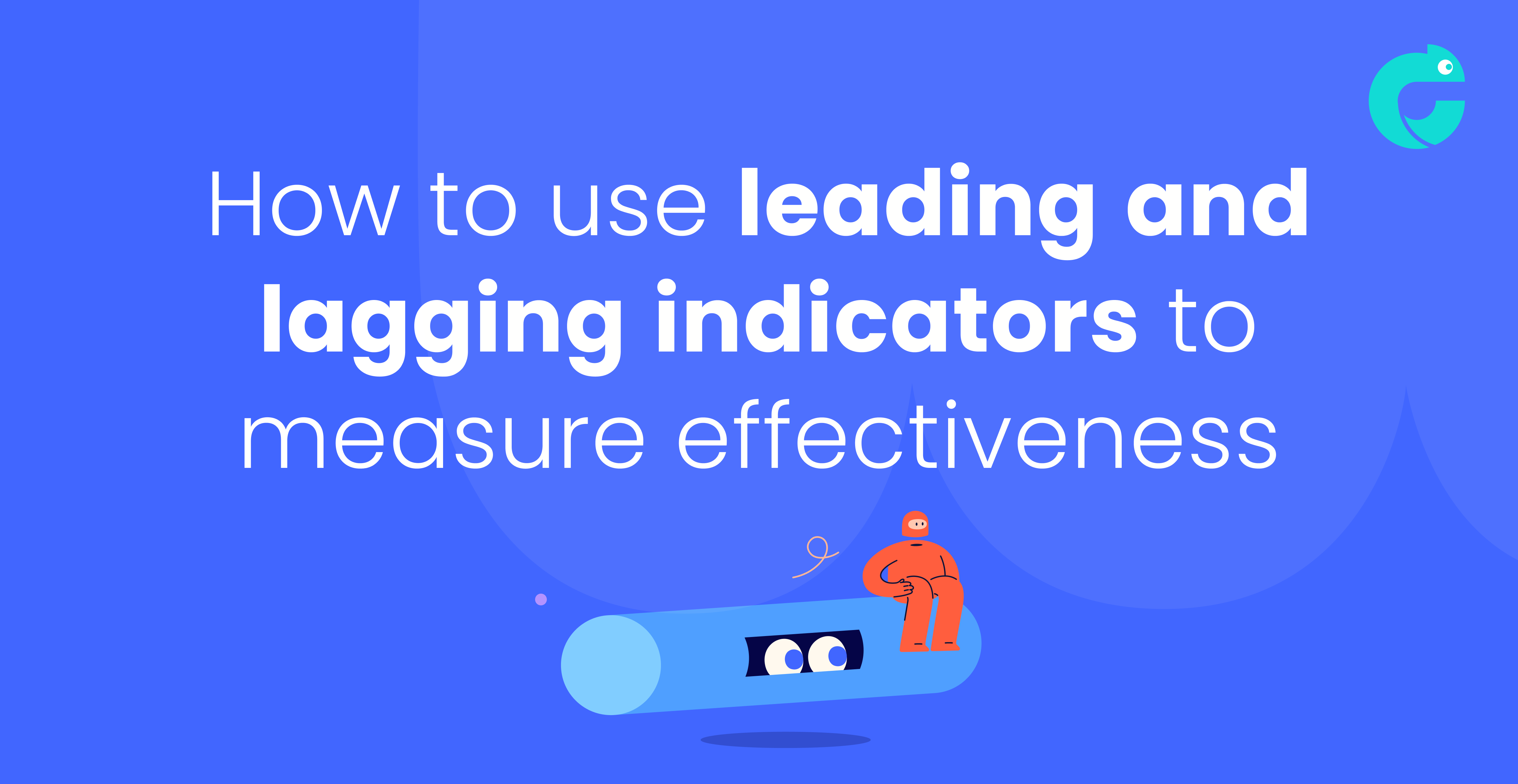5 strategies to make your compliance training more engaging
People don’t love compliance training. Learners often find it dull because nobody’s tried to make the dry, technical content appealing. And bored people tend to tune out and forget what they’ve learned. When that happens, training ends up being a waste of time and does little to reduce your risks.
It's understandable if compliance content is a bit of a snooze fest
Making dense, technical info engaging is a tough ask. And L&D teams are often overworked and under resourced, so finding time to do a great job on compliance learning can be tough.
Not only that, but your organisation might not care that much. Compliance is often seen as a tick box exercise. Organisations can become so focused on proving people have completed compliance training they lose sight of why compliance is required. It’s hard to be an advocate for quality compliance learning, when your boss is all, “Whatevs.”
But compliance training exists for a reason. It’s there to keep your people and your customers safe and keep your organisation on the right side of the law. That’s a pretty big deal, so it’s a good idea to make your compliance training as engaging as you can. So here are five practical ways to create a more enjoyable, effective compliance learning experience.
1: Make visual design work for your learners
Visuals help us process info faster and improve our ability to remember facts. Engaging learning uses the full visual toolkit from video, animations and audio to graphics and graphs.
You can use visuals to make complex info easier to understand – ideal for detailed compliance learning. Think about ways you could use visuals to break info up into more digestible chunks, walk learners through a process, or reinforce key points.
Visuals also make compliance learning feel more relevant to your team. Include images of real-life scenarios, people, and places. From photographs of risks to look out for, to a comic strip exploring a tricky scenario your team may encounter; visuals help bring theory to life.
Top tip from our design team for compliance learning – if your subject matter is dry, adopt a light-hearted, illustrative style to inject a bit of fun into a dull topic. This free guide to visual design in learning gives insights into how you can use visuals to capture attention and drive engagement, with terrific tips from Canva's Senior Learning Experience Designer.
2: Mix up your learning and make things interactive
Different people like to learn in different ways, so using a varied range of learning content keeps learners engaged. Incorporate a mix of reading material, videos, and interactive elements like quizzes to appeal to different learning styles.
Chameleon user Ellayne Mackenzie from Sharesies highlights the importance of including "something to read, something to watch, and something to do.” She says, “You need to accommodate every learning style. You can't rely on people reading or watching everything.”
Using Chameleon as your learning authoring platform makes it easy for you to include different types of media including photographs, illustrations, video, audio, and links to further reading. It’s also super easy to include interactions to make your learning more fun. Choose from a toolkit of 28+ different learning interactions including:
- Quizzes
- Sliders
- Flip cards
- Choose your own adventure scenarios
3: Tell stories to make people care more
It’s too easy for compliance learning to sound cold and clinical. That doesn’t help people care about compliance or understand how important it is. One way to get around this is to use storytelling to humanise compliance topics and make them more relatable.
Humans are programmed to respond intensely to stories. Stories of real-life scenarios your team encounter day-to-day help make compliance learning more engaging and relevant. Not only that, but you help learners connect theory with practical application by giving them to chance to roleplay how to handle tricky situations in a risk-free way.
Remember to make your story content relevant to your team. Recently, we met an energy company struggling to get people to engage with health and safety compliance because their content wasn’t relevant to most of their team. Their team of engineers needed to know how to work at height and around chemicals, but that content was also being rolled out to hundreds of head office staff who never work in those high-risk situations. So, when you think about what stories to include in your compliance training, select situations that will be recognisable and interesting to the majority of your team.
This guide to storytelling in learning shows you five ways to use storytelling to make your compliance training feel more real to your team.
4: Use pre-assessments to let learners skip stuff they already know
Compliance training is often an annual obligation. That makes sense because compliance is important, and training isn’t always one and done. But when everyone is busy, wasting your team’s time with training they already know all the answers to isn’t a winning move.
Pre-assessments are a game-changer for compliance training. They allow your learners to bypass sections of compliance training where they already know their stuff. Your team saves time, your organisation saves money, and people feel like they’re being treated like grownups because you’re showing respect for their knowledge and experience.
Chameleon makes it easy to build pre-assessments into compliance training. This guide to pre-assessments shows you how to implement this feature to keep your team onside.
5: Make sure your compliance learning is responsive
This should be a given, yet here we are in the mid-2020s, and some learning authoring platforms still don’t produce responsive e-learning content.
If you want more people to participate in compliance training without having to send out endless reminders, make sure your e-learning is optimised to work seamlessly across all devices. You want your team to be able to learn on their laptop, on their mobile, or on a tablet so they can do their compliance training anytime, anywhere.
Responsive learning increases accessibility and learner participation. People like consuming content on their mobile. They value the ease and flexibility. And with today’s hybrid workforce, many people don’t spend much time at their desks. This guide to the importance of responsive learning gives you some handy tips for designing responsive learning.
Learners prefer compliance learning made with Chameleon
We’re basing this on anecdotal evidence from all our happy Chameleon customers but learners prefer e-learning made with Chameleon because it’s more attractive, interactive, and supports many different forms of content (including pre-assessments).
The NRL in Australia saw a spike in engagement with their compliance training after switching to Chameleon from Rise. L&D lead Eva Senior says, “Our learners are really liking the new look and the new interactions. We’re receiving more positive feedback from learners compared to our previous programmes. And for the first time we’re seeing comments on social media saying, we really love what the NRL is doing in the education space.”
If you’re keen to give your learners a better compliance training experience, give Chameleon a free trial today, or view a demo to see how good your compliance learning could be.
Share this
You May Also Like
These Related Stories

Improving compliance training with pre-assessments

Top 5 Reasons Learners Drop Off and How Analytics Can Solve Them

